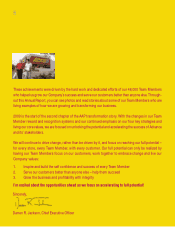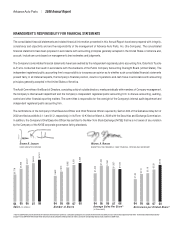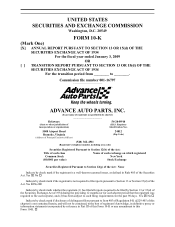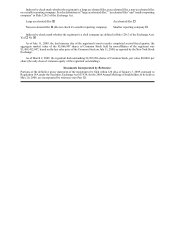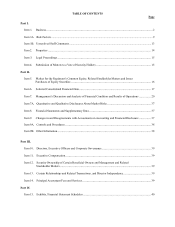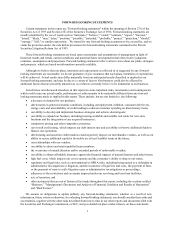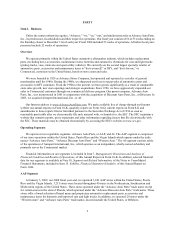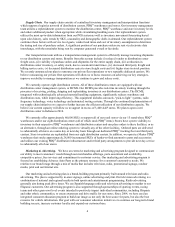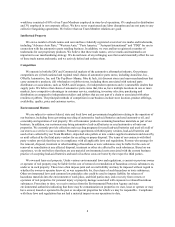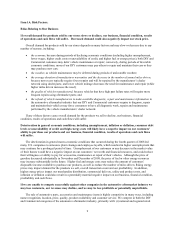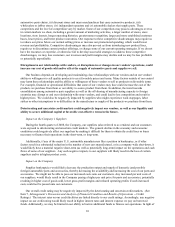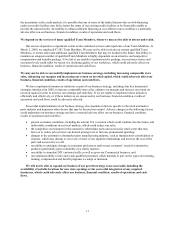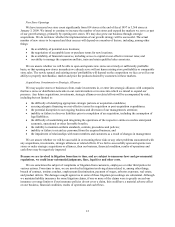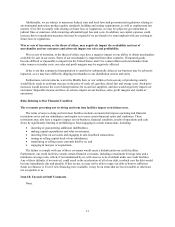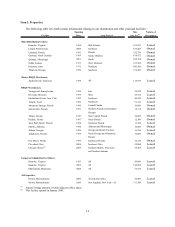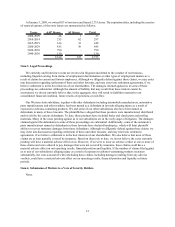Advance Auto Parts 2008 Annual Report Download - page 20
Download and view the complete annual report
Please find page 20 of the 2008 Advance Auto Parts annual report below. You can navigate through the pages in the report by either clicking on the pages listed below, or by using the keyword search tool below to find specific information within the annual report. 6
Supply Chain. Our supply chain consists of centralized inventory management and transportation functions
which support a logistics network of distribution centers, PDQ® warehouses and stores. Our inventory management
team utilizes a replenishment system to monitor the distribution center, PDQ® warehouse and store inventory levels
and orders additional product when appropriate while streamlining handling costs. Our replenishment system
utilizes the most up-to-date information from our POS system as well as inventory movement forecasting based
upon sales history, sales trends by SKU, seasonality and demographic shifts in demand. Our replenishment system
combines these factors with service level goals, vendor lead times and cost of inventory assumptions to determine
the timing and size of purchase orders. A significant portion of our purchase orders are sent via electronic data
interchange, with the remainder being sent by computer generated e-mail or facsimile.
Our transportation team utilizes a transportation management system to efficiently manage incoming shipments
to our distribution centers and stores. Benefits from this system include (i) reduced vendor to distribution center
freight costs, (ii) visibility of purchase orders and shipments for the entire supply chain, (iii) a reduction in
distribution center inventory, or safety stock, due to consistent transit times, (iv) decreased third party freight and
billing service costs, (v) decreased distribution center to store freight costs and (vi) higher store in-stock position.
We recently announced our plan to outsource our private fleet operations to two reputable dedicated carriers. We
believe outsourcing our private fleet operations will allow us to focus resources on achieving our key strategies,
improve our ability to manage transportation as we continue to grow and reduce costs.
We currently operate eight distribution centers. All of these distribution centers are equipped with our
distribution center management system, or DCMS. Our DCMS provides real-time inventory tracking through the
processes of receiving, picking, shipping and replenishing inventory at our distribution centers. The DCMS,
integrated with technologically advanced material handling equipment, significantly reduces warehouse and
distribution costs, while improving efficiency. This equipment includes carousels, “pick-to light” systems, radio
frequency technology, voice technology and automated sorting systems. Through the continued implementation of
our supply chain initiatives we expect to further increase the efficient utilization of our distribution capacity. We
believe our current capacity will allow us to support in excess of 3,400 AAP stores. We plan to open a new
distribution center in Indiana in 2010.
We currently offer approximately 60,000 SKUs to support all of our retail stores via our 15 stand-alone PDQ®
warehouses and/or our eight distribution centers (all of which stock PDQ® items). Stores have system visibility to
inventory in their respective PDQ® warehouses and distribution centers and can place orders to these facilities, or as
an alternative, through an online ordering system to virtually any of the other facilities. Ordered parts are delivered
to substantially all stores on a same day or next day basis through our dedicated PDQ® trucking fleet and third party
carriers. Store inventories are replenished from our eight distribution centers. In addition, we operate a Master PDQ®
warehouse that stocks approximately 26,000 incremental SKUs of harder-to-find automotive parts and accessories
and utilizes our existing PDQ® distribution infrastructure and/or third party arrangements to provide next day service
to substantially all of our stores.
Marketing & Advertising. We have an extensive marketing and advertising program designed to communicate
our ability to meet consumers’ needs through our merchandise offerings, parts assortment and availability,
competitive prices, free services and commitment to customer service. Our marketing and advertising program is
focused on establishing Advance Auto Parts as the primary resource for a customer's automotive needs. We
reinforce our brand image through a mix of media that includes television, radio, promotional signage, outdoor
media, print and our Internet site.
Our marketing and advertising plan is a brand-building program primarily built around television and radio
advertising. The plan is supported by in-store signage, online advertising and print. Our television advertising is a
combination of national and regional media in both sports and entertainment programming. Radio advertising
generally airs during peak drive times. We use Spanish-language radio and television advertising to market to our
Hispanic customers. Our advertising program is also supported through sponsorships of sporting events, racing
teams and other grass-root level events intended to positively impact individual communities, including Hispanic
and other ethnic communities, to create awareness and drive traffic for our stores. Since 2004, we have used an
integrated consumer education program to build our image as not only the best source for parts, but also the best
resource for vehicle information. Our goal with our consumer education initiative is to continue our long-term brand
building success, increase customer loyalty and expand our customer base.


